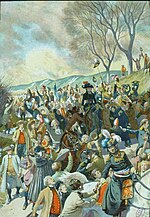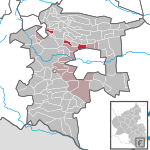Landau Zoo
Zoo Landau in der Pfalz is a 4-hectare (9.9-acre) zoo in Landau in der Pfalz, Germany. It was founded in 1904. The governing body is the municipality of the city of Landau in der Pfalz (Landau/Palatinate/Germany). The zoo is situated in the city center, along the historic remains of a French fort. The average yearly number of paying visitors is between 155,000 and 170,000. The zoo is home to about 600 animals representing 110 species of mammals, birds, reptiles, amphibians, fish, and invertebrates. The current total number of employees is 20. Zoo Landau is a member of the European Association of Zoos and Aquaria (EAZA) and the World Association of Zoos and Aquariums (WAZA). The zoo's mission is the implementation of the objectives of the World Association of Zoos and Aquariums conservation strategy with a strong dedication to education, in-situ conservation and research. Among the rare and endangered species which are kept in the zoo are Philippine spotted deer, white-naped mangabeys, Northeast African cheetah and Madagascar side-necked turtles.
Excerpt from the Wikipedia article Landau Zoo (License: CC BY-SA 3.0, Authors).Landau Zoo
Hindenburgstraße,
Geographical coordinates (GPS) Address External links Nearby Places Show on map
Geographical coordinates (GPS)
| Latitude | Longitude |
|---|---|
| N 49.2031201 ° | E 8.1103295 ° |
Address
Landauer Zoo
Hindenburgstraße
76829 , Kernstadt
Rhineland-Palatinate, Germany
Open on Google Maps









